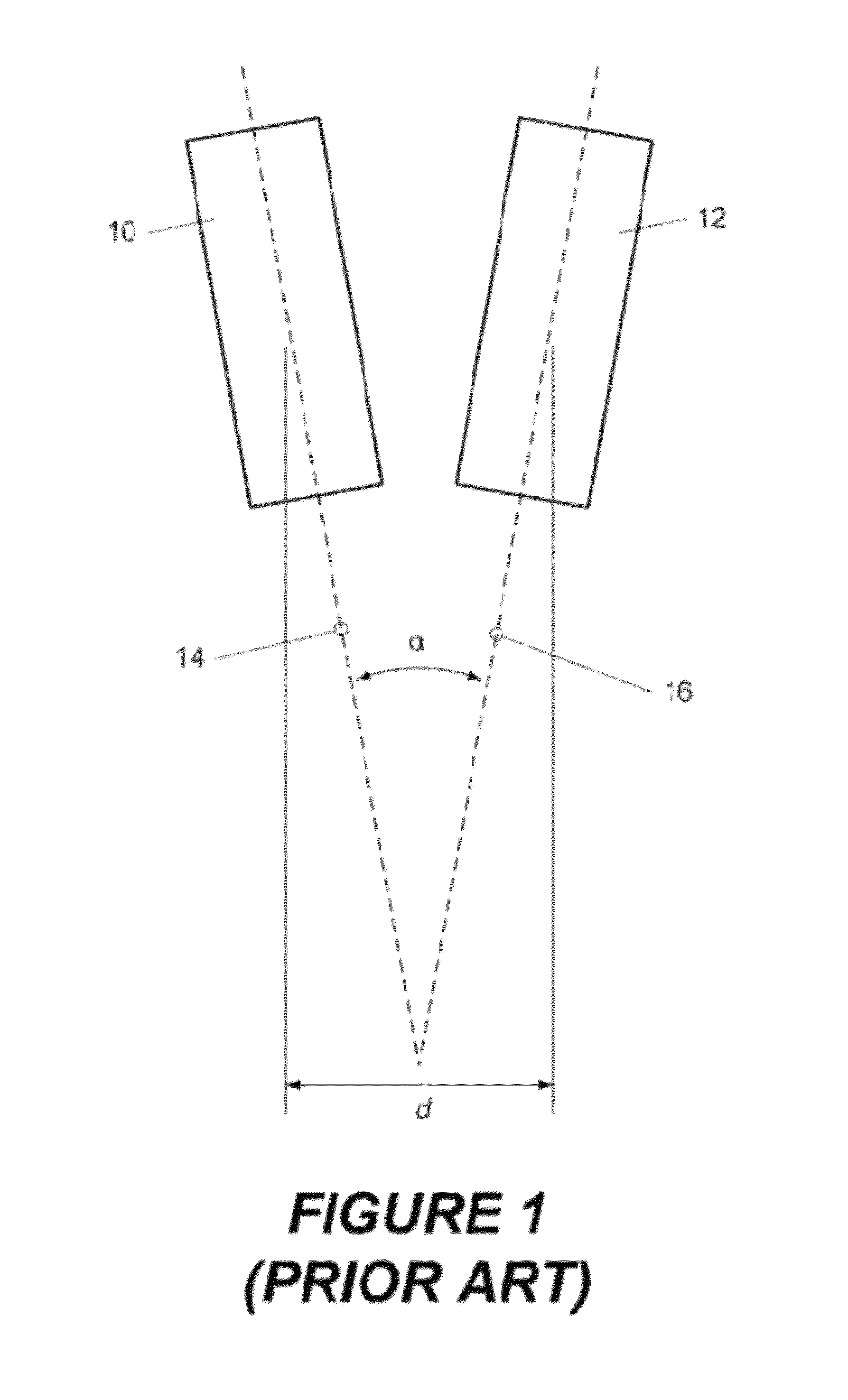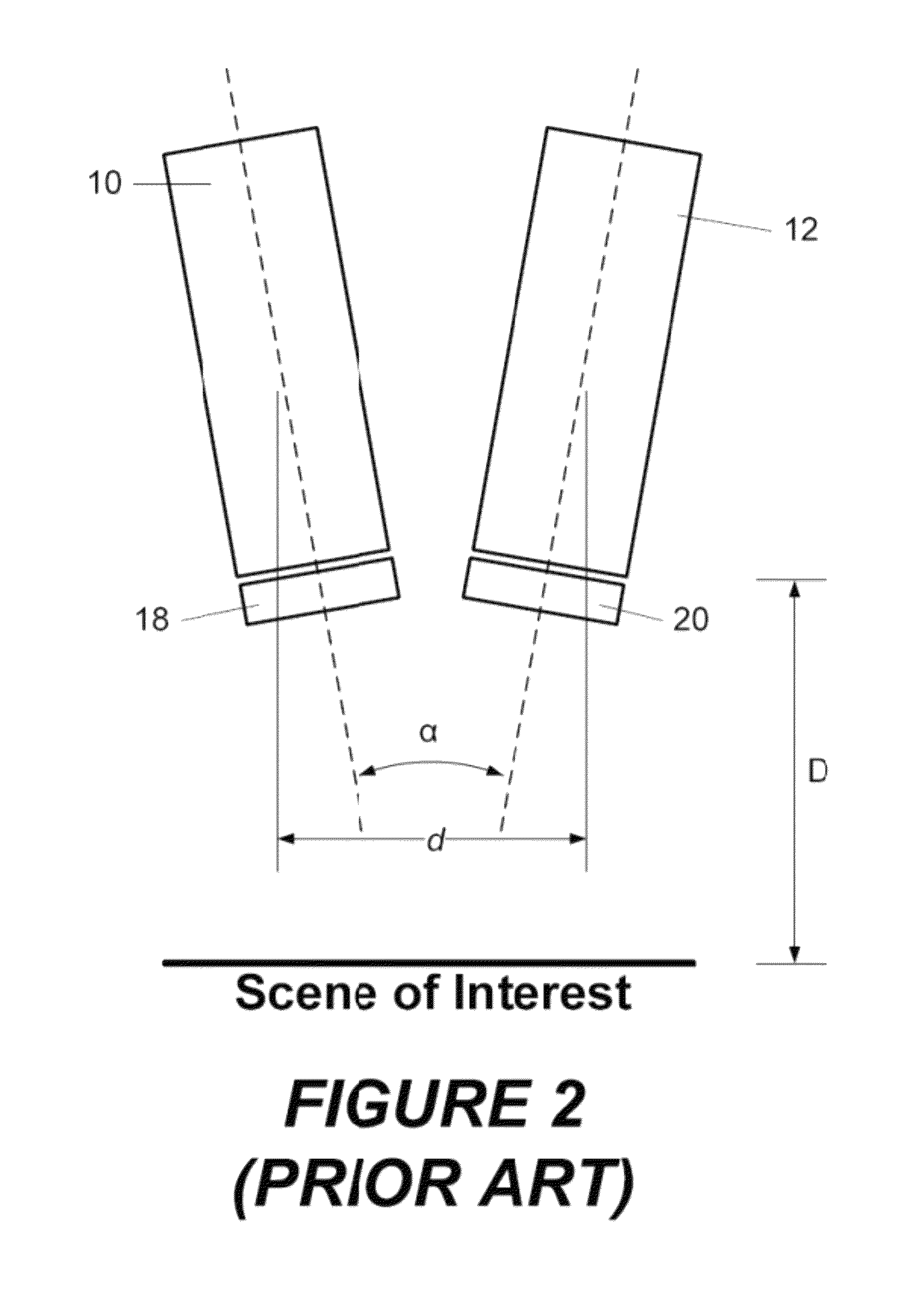Motionless adaptive stereoscopic scene capture with tuneable liquid crystal lenses and stereoscopic auto-focusing methods
a liquid crystal lens and scene capture technology, applied in the field of digital imaging systems, can solve the problems of difficult time-synchronization between multiple mechanical drive arrangements for optical element displacement, mechanical focusing devices, and unsuitable many applications, and achieve the effect of efficient control of the movement of the focus
- Summary
- Abstract
- Description
- Claims
- Application Information
AI Technical Summary
Benefits of technology
Problems solved by technology
Method used
Image
Examples
Embodiment Construction
[0048]Stereoscopic imaging a 3D scene depends upon the acquisition system and the display system. The following three parameters are important:[0049]1) Angular magnification (at the point of view):
Ma=angular extent of the displayed scene / angular extent of the recorded scene[0050]2) Pupil distance magnification (from multiple points of view):
Me=pupil separation of the viewer's eyes / pupil separation d of the two cameras[0051]3) Apparent distance of the infinite object plane: Z'inf.
[0052]Changing these parameters can change the displayed space: angular magnification (lateral magnification) and pupil distance magnification (depth magnification) can change. If Ma=1, Me=1, Z'inf=infinity, then the world is reproduced as it is. Depth reproduction will be non-linear if Z'inf is not (effectively) infinity (see examples below).
[0053]Unlike viewer's eyes, display systems are generally fixed focus, in the sense that, a 3D video display always presents its images in the plane of the display. Clo...
PUM
| Property | Measurement | Unit |
|---|---|---|
| pupil diameter | aaaaa | aaaaa |
| pupil diameter | aaaaa | aaaaa |
| thickness | aaaaa | aaaaa |
Abstract
Description
Claims
Application Information
 Login to View More
Login to View More - R&D
- Intellectual Property
- Life Sciences
- Materials
- Tech Scout
- Unparalleled Data Quality
- Higher Quality Content
- 60% Fewer Hallucinations
Browse by: Latest US Patents, China's latest patents, Technical Efficacy Thesaurus, Application Domain, Technology Topic, Popular Technical Reports.
© 2025 PatSnap. All rights reserved.Legal|Privacy policy|Modern Slavery Act Transparency Statement|Sitemap|About US| Contact US: help@patsnap.com



